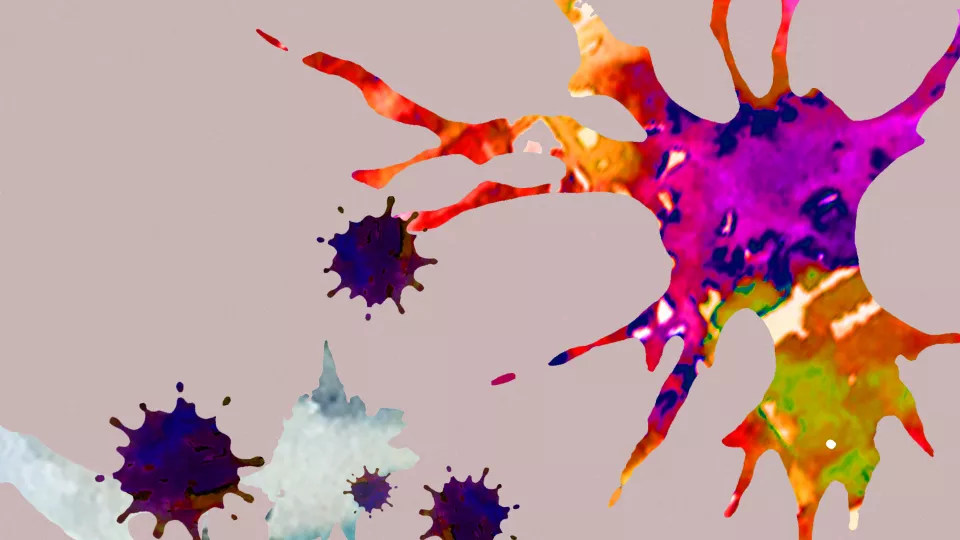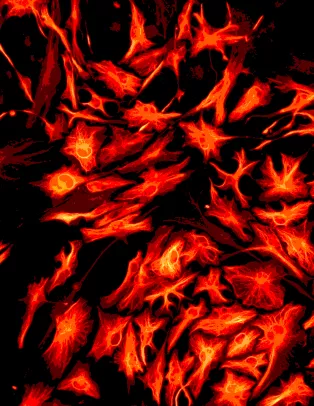The human brain is often likened to the night sky. Look up and one will see billions upon billions of stars. Our brains are similar in that within each are billions of brain cells – about 86 billion, to be exact. In this count are a variety of cells, including star-shaped cells, known as astrocytes; cells which play important roles in the human brain.
Astrocytes are seen as helpers, helping our neurons, another type of brain cell which sends information to one another, work as they should. When our helper cells do not do their job properly – something that can happen due to aging – this has been linked to several brain disorders. Interested in understanding how aging affects the brain, researchers from the research group on Stem Cells, Aging, and Neurodegeneration set out to learn more about astrocytes. Everything from how they interact with other types of cells in the brain to their role in age-related brain disorders like dementia.
What the team of scientists, led by Dr. Henrik Ahlenius at Lund University and Lund Stem Cell Center, quickly came to learn was that this would be no easy task. It turns out that human astrocytes are quite hard to get a hold of, inspiring the team to find a way to create them in the lab.
“We wanted to efficiently create functional human astrocytes that could be used to model age-related diseases. Something that had not been done reliably until now,” stated Ella Quist, first author of the publication.
In 2018, they first presented a method to generate astrocytes from human pluripotent stem cells, cells found very early in development and responsible for generating all cells in the body. Although cells generated from pluripotent stem cells are instrumental to understand how astrocytes work, and for studying inherited diseases, they are not optimal for studying age related diseases as they cannot simulate the changes that occur during aging.
This sent the team on another journey to develop an alternative method to generate astrocytes in the lab. Here they turned to a technique called direct conversion, where the activation of certain genes can remake one cell type into another. Cells generated this way have the advantage of better mimicking age related changes. In the group’s latest study in the journal, Stem Cell Reports, they have identified three genes that can efficiently turn human skin cells into astrocytes.
For the researchers to trust their method, and before these lab-produced astrocytes could be used in their research, they had to meet a checklist of criteria determined by the team.
The current study shows how their manufactured astrocytes passed their tests with flying colors. “We found that our astrocytes could perform many different functions that one would expect to see from human astrocytes in the brain,” explained Ella. “We also found that when we simultaneously grew our astrocytes with neurons, also manufactured from human fibroblasts, the function of neurons improved, showing that our astrocytes indeed support neurons.”
"When we first started, three selected genes were used to turn on the part of the genome that astrocytes use. We discovered while working through our checklist, that by removing one of these genes the astrocytes that we got were better and more of the fibroblasts changed their identity from skin cell to astrocyte. All the while making this process simpler and more efficient,” noted Ella.
With this new method, the group has found a new way to overcome the insufficient supply of human astrocytes using human skin cells, including from adult and aged donors. In doing so, they have opened new possibilities to learn more about astrocytes - how they work and what happens to the human brain when they do not.
“We can now study astrocytes as individual cells but also how they interact with neurons. Additionally, we can make both neurons and astrocytes directly from patient skin cells to generate and study models of human brain diseases, including those related to aging, and to test and develop drugs or treatments,” concluded Dr. Henrik Ahlenius, Principal Investigator.



